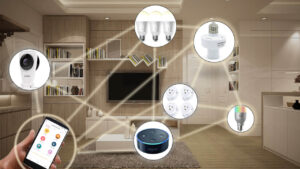Ever stared at a smart home device box, wondering if you’re about to become the neighborhood tech hero or create an electronic disaster? DIY smart home setup can’t be that hard, right? You’re not alone. With the smart home market exploding faster than a summer haboob in Prescott, more folks are asking: Can I install these gizmos myself, or do I need to call in the pros?
According to recent tech surveys, a whopping 68% of homeowners are now considering smart home upgrades. But here’s the million-dollar question: Are you ready to dive into the world of DIY smart home installation?
Understanding Smart Home Device Complexity
Not all smart home devices are created equal. Some are so simple a desert lizard could install ’em, while others might make you feel like you’re trying to solve a Rubik’s cube blindfolded.
- Difficulty levels range from “piece of cake” to “rocket science”
- Some devices require basic tech skills
- Others demand electrical knowledge and precise installation
Pro tip for Prescott residents: If you’re more comfortable changing a light bulb than configuring a network, you might want to proceed with caution.
When DIY Makes Sense: Easy Installation Scenarios
Certain smart home devices are practically begging to be self-installed. Think:
- Smart plugs
- Wireless security cameras
- Voice-activated speakers
- Smart thermostats with clear instructions
These gadgets often come with user-friendly apps and step-by-step guides that even your tech-challenged uncle could follow.
Red Flags: When to Call a Professional Installer
Some installations scream “HELP!” louder than a cactus wren during mating season. Watch out for:
- Complex wiring requirements
- Electrical system modifications
- Smart home systems needing intricate network configurations
- Devices requiring special tools or expertise
Feeling overwhelmed? The pros at Allied Electric can save you from potential tech trauma.
Tools and Preparation: Your DIY Survival Kit
Before you start, gather your digital warrior equipment:
- Smartphone or tablet
- Stable Wi-Fi connection
- Basic tools (screwdriver, drill)
- Patience (more important than any physical tool!)
Common Pitfalls to Avoid in Smart Home Installation – DIY Smart Home Setup:
Let’s be real – mistakes happen. But some can be costly:
- Forgetting to turn off electricity before installation
- Ignoring manufacturer instructions
- Rushing through setup
- Neglecting firmware updates
Remember, a little extra time spent preparing beats hours of troubleshooting later.
The Hybrid Approach: Mix and Match Installation Methods
Who says it’s all-or-nothing? Is DIY smart home setup for you? Consider a balanced strategy:
- Install simple devices yourself
- Hire professionals for complex systems
- Get a consultation to understand your home’s unique needs
Your Smart Home, Your Choice – DIY Smart Home Setup
Whether you’re a tech wizard or a complete novice, smart home installation is within reach. Trust your instincts, know your limits, and don’t be afraid to ask for help.
Ready to transform your Prescott home into a smart tech haven? Allied Electric is just a click away for all your installation needs!
FAQs – DIY Smart Home Setup
How difficult are smart home installations?
Difficulty varies. Some devices take minutes, others require professional expertise.
What smart devices are easiest to install?
Smart plugs, wireless cameras, and voice-activated speakers top the list.
How much can I save by installing devices myself?
Potentially $50-$200 per device, depending on complexity.
What if something goes wrong during DIY installation?
Most manufacturers offer support. For complex issues, consult a professional.
Do smart home devices work with older homes?
Most modern smart devices are designed to be compatible with various home setups. Older homes might require some additional adapters or network configurations, but compatibility is rarely a complete dealbreaker.
How secure are smart home devices? – DIY Smart Home Setup
Security depends on proper setup. Use strong, unique passwords, enable two-factor authentication, and keep firmware updated. Avoid using default settings and be cautious with public Wi-Fi connections.
What’s the average cost of smart home device installation?
Costs vary widely. DIY installations can be free, while professional setups range from $50 to $500 depending on device complexity and home requirements. Simple devices like smart plugs cost almost nothing to install, while comprehensive home automation systems can be more expensive.